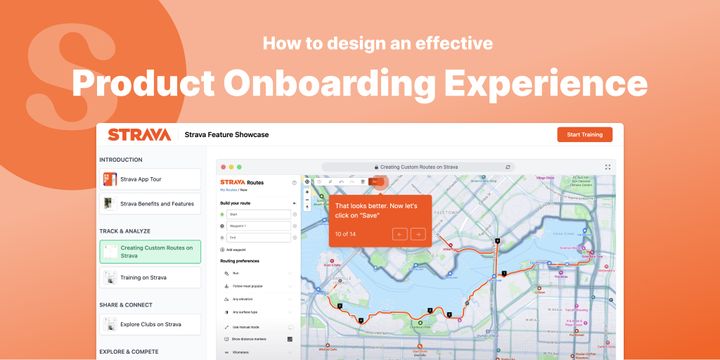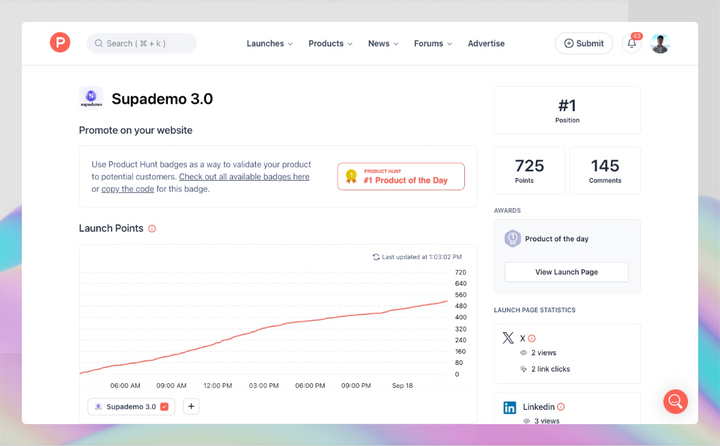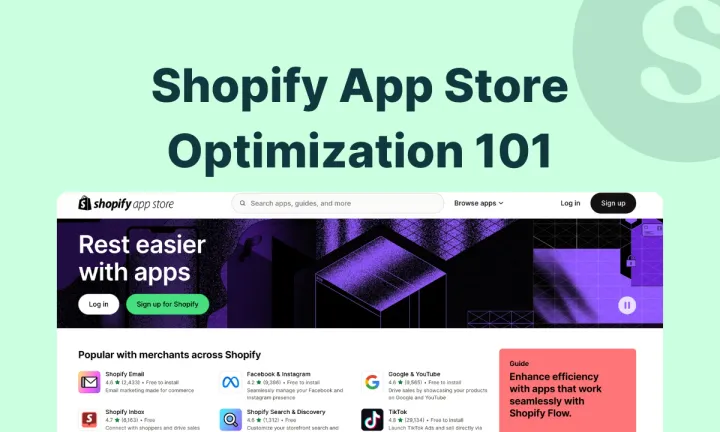Effective product onboarding and walkthroughs are critical components of the sales, customer success, and marketing functions within software companies. When done right, they ensure clear customer understanding and product adoption - thereby increasing loyalty while reducing the risk of churn.
But beyond simply reducing user frustration and general support burden, effective product onboarding walkthroughs can reinforce value propositions and highlight unique features - forming an integral part of the customer retention and expansion experience.
While there’s no one-size-fits-all approach when it comes to SaaS product walkthroughs, here are several best practices on how to design an effective onboarding experience, using popular tools like in-app tours or interactive product demos.
What is the user onboarding process?

The user onboarding process guides new users through your product's core features and functions. It starts when a user first encounters your product and continues until they can use it effectively on their own.
1. First impression: The initial interaction with your product
2. Sign-up: Creating an account or logging in
3. Welcome: Introducing the product's main purpose
4. Setup: Configuring basic settings or preferences
5. Feature tour: Highlighting key features and their benefits
6. First success: Helping users achieve an initial goal
A well-designed onboarding process reduces the learning curve and quickly demonstrates your product's value. This leads to higher user engagement, retention, and overall satisfaction.
The ultimate aim is to transform new users into confident, regular users who understand how your product can solve their problems or improve their lives.
Why should product teams follow product onboarding best practices?
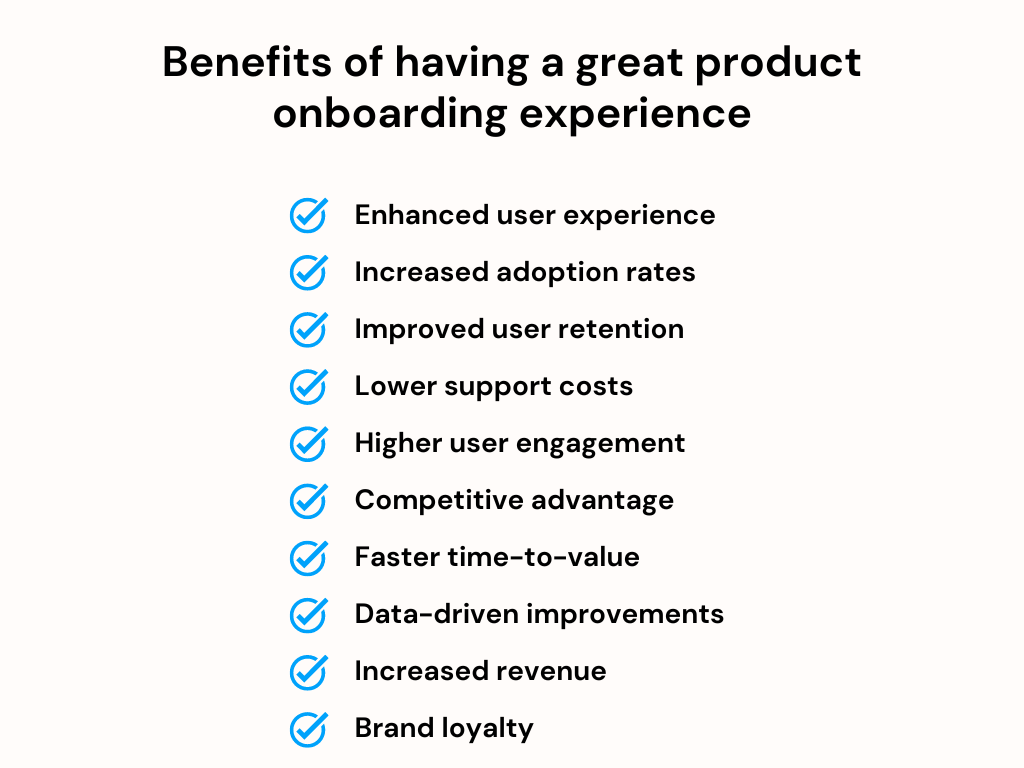
Product onboarding best practices are essential for maximizing your product's potential and ensuring its success in the market.
Here's a more detailed look at why they matter:
- Enhanced user experience: A well-designed onboarding process simplifies the learning curve, making your product more accessible and enjoyable to use. This initial positive experience sets the tone for the user's entire journey with your product.
- Increased adoption rates: By clearly demonstrating your product's value and key features, effective onboarding encourages more users to fully adopt and integrate it into their routines or workflows.
- Improved user retention: Users who understand and appreciate your product from the start are more likely to become long-term customers. This reduces churn rates and builds a stable user base.
- Lower support costs: When users grasp your product's functionality early on, they're less likely to require extensive support. This saves your team valuable time and resources, allowing them to focus on product improvement and innovation.
- Higher user engagement: Users who quickly understand your product's benefits are more likely to engage with its features regularly. This increased usage can lead to deeper product integration and loyalty.
- Competitive advantage: In a crowded market, a smooth onboarding experience can set your product apart. It demonstrates your commitment to user success and can be a key differentiator.
- Faster time-to-value: Effective onboarding helps users start benefiting from your product sooner. This quick realization of value increases satisfaction and reinforces the decision to use your product.
- Data-driven improvements: Onboarding processes often provide valuable user data. This information can guide product development and marketing strategies, leading to continual improvements.
- Increased revenue: All these factors contribute to higher revenue through various channels - more upgrades to premium features, higher renewal rates for subscription-based products, positive word-of-mouth leading to new user acquisition, reduced marketing costs due to improved user satisfaction and retention, etc.
- Brand loyalty: A positive onboarding experience contributes to overall brand perception, fostering loyalty that extends beyond the product itself.
By prioritizing onboarding best practices, product teams create a solid foundation for sustained growth, user satisfaction, and long-term success in the market.
7 best practices for engaging and user-friendly product onboarding & walkthroughs
1. Remove friction from the sign-up process
The first step in effective onboarding is to streamline your sign-up process. Here's how to do it:
Simplify information collection:
- Ask only for essential information upfront
- Avoid requesting unnecessary details that can deter potential users
Offer multiple sign-up options:
- Allow users to create accounts using email and password
- Integrate social media login options (e.g., Google, Facebook)
- Implement Single Sign-On (SSO) for business users
Delay additional steps:
- Postpone email verification if possible
- Avoid requesting payment information immediately
Design a clean, user-friendly interface:
- Use clear, concise language
- Implement a progress indicator for multi-step sign-ups
- Ensure the process works smoothly on both desktop and mobile devices
Consider a "try before you buy" approach:
- Offer a limited free trial without requiring payment information
- Provide a demo option to showcase your product's value
By minimizing barriers to entry, you increase the likelihood of users exploring your product and experiencing its benefits firsthand.
Remember, every extra step in the sign-up process is an opportunity for potential users to change their minds. Keep it simple, quick, and focused on getting users to your core product experience as fast as possible.
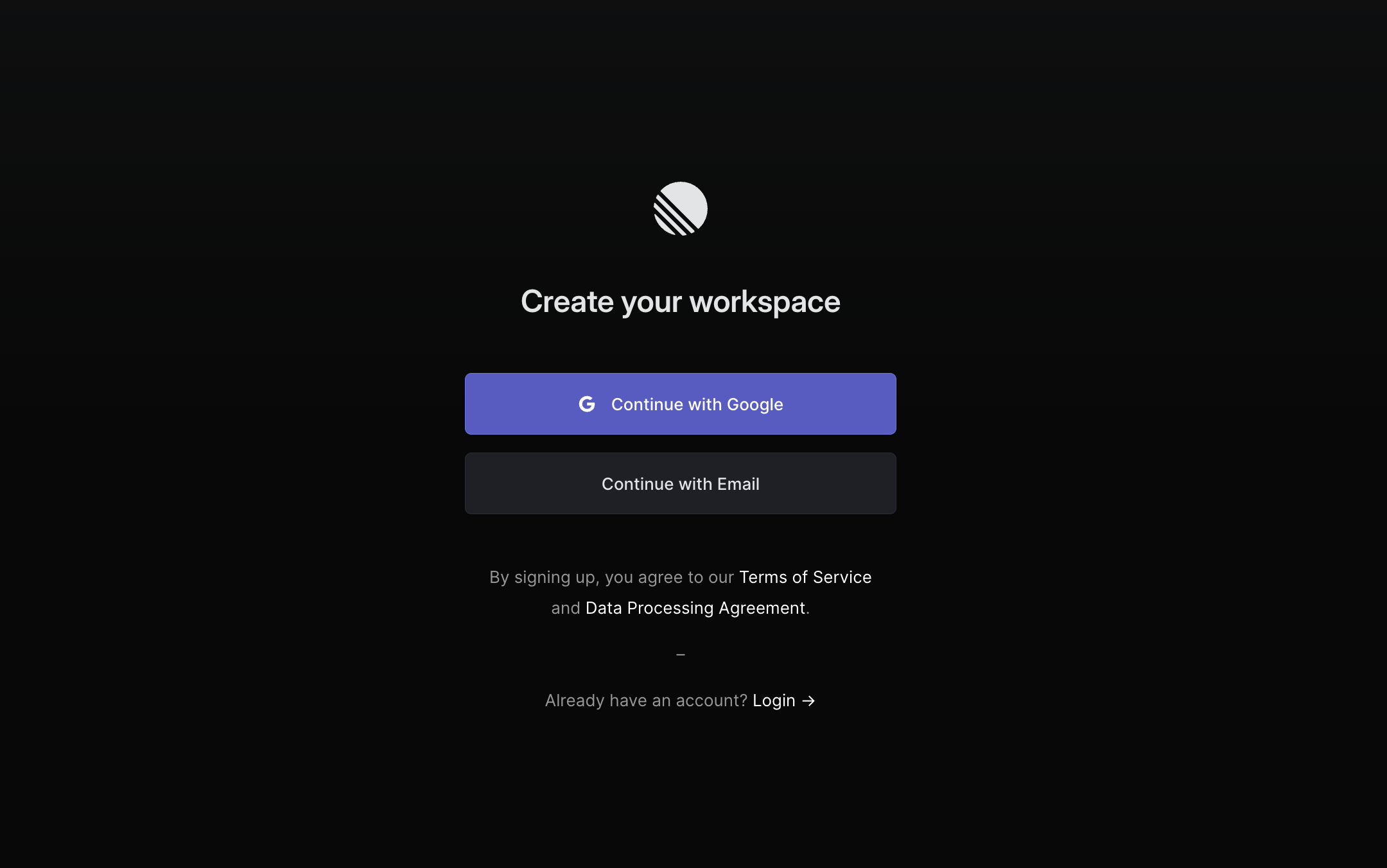
2. Make onboarding interactive
Guide customers step-by-step instead of relying on unengaging videos or static PDFs. For instance, guide them through a clear, cohesive flow of clicks, text entries, and feature benefits to drive engagement.
Here's an example onboarding flow that highlights key features and benefits through a self-paced interactive demo:
3. Make onboarding self-paced and async
Whenever possible, the customer should be able to snooze the product walkthrough and come back to it when they’re ready. Don't create an onboarding tooltip that the customer can't come back to after initially snoozing or dismissing.

Or better yet, embed interactive demos and guides in knowledge bases or support docs to make onboarding steps accessible to customers 24/7, whenever they need it.
4. Create multiple entry points
Similar to the above recommendation, the customer should be able to access the walkthrough via multiple entry points - essentially following the ethos of “meeting customers where they are”.
This includes making walkthroughs accessible in-app or out-of-app, like in support docs, onboarding playbooks, and help centers.
5. Keep onboarding walkthroughs concise
Make sure the product walkthrough is concise and to the point - ideally modularized enough to be less than 10 steps per walkthrough for maximum engagement.
6. Personalize product onboarding
Whenever possible, make your product onboarding experience contextual and personalized based on each customer. Tailoring your onboarding process to specific user types significantly boosts engagement and retention.
This may include using dynamic variables to personalize your onboarding at scale, letting customers choose their own onboarding journey with conditional branching, or manually sending out onboarding materials based on each customer.
Personalization is an easy but highly effective way to increase product adoption, drive activation, and accelerate time-to-value.
7. Give an option to skip the onboarding flow
While a well-designed onboarding process is crucial, it's equally important to respect users who may not need or want it. Here's why and how to implement a skip option:
Why offer a skip option:
- Some users may already be familiar with your product
- Returning users might not need a full onboarding experience
- Different users have varying learning preferences
How to implement effectively:
- Make the skip option visible but not distracting
- Place it consistently across all onboarding steps
- Use clear, simple language like "Skip" or "Skip Tour"
Best practices:
- Offer a way to revisit the onboarding later if needed
- Track skip rates to identify potential improvements
- Consider a minimalist onboarding option for those who skip
Remember, forcing users through an unnecessary onboarding process can be counterproductive. By providing a skip option, you show that you value your users' time and trust their judgment. This flexibility can lead to a more positive initial experience with your product, especially for those who prefer to learn by doing.
What is the future of product onboarding?
With the continued rise of PLG, customers will universally expect simple, interactive product walkthroughs within the tools they use (or are in the process of evaluating). With the growing pool of software options and shortening user attention spans, software companies will need to continually improve the walkthrough design to remain competitive.

Furthermore, as product-led growth becomes an area of focus for more companies, clear, async product walkthroughs will become more and more important.
Frontier technologies like Generative AI will unlock previously unforeseen ways to reinvent product walkthroughs - whether that be via synthetic AI voice overlays, conversational flows, or instant walkthrough creation based on viewer intent and prompt.
Conclusion: a great product onboarding experience drives user adoption and retention
At Supademo, we've analyzed hundreds of examples of how effective product walkthroughs directly translated to decreases in churn, time-to-activation, and customer support queries.
In fact, we leverage Supademo (example here) across our product onboarding flow to help drive our customers to successful product outcomes.
Ready to start improving your product onboarding experience? Leverage the power of interactive product demos with a Supademo account - free and no credit card required.



